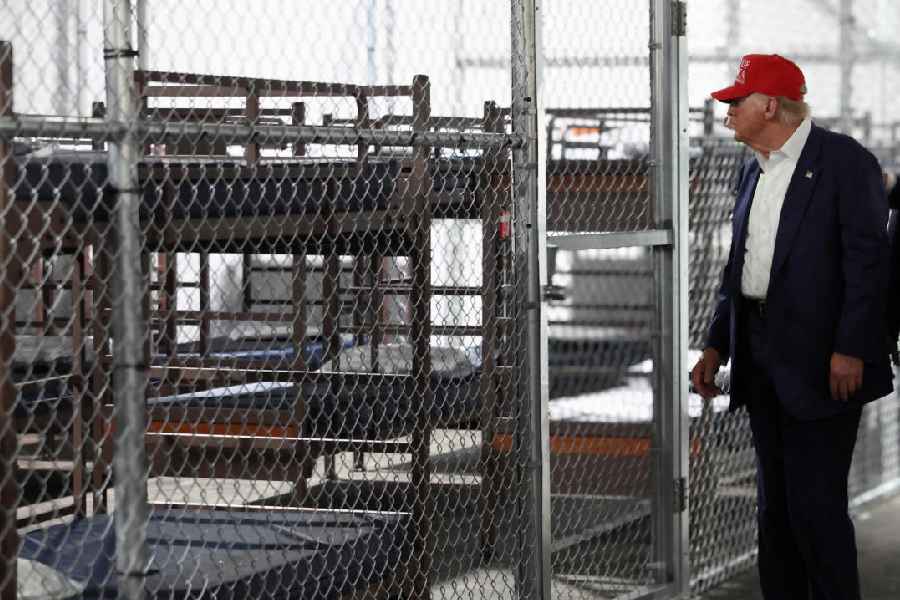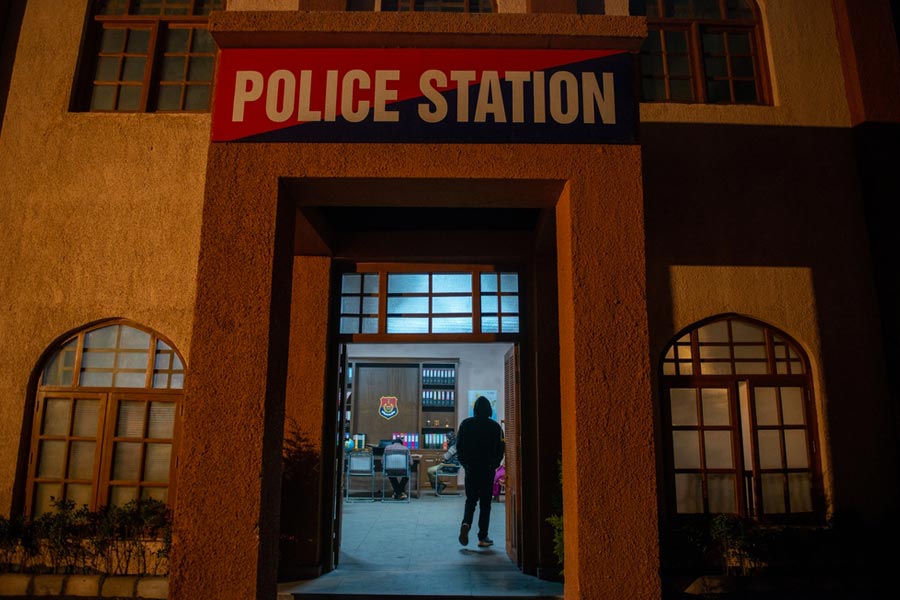 |
| Deputy chief minister Sushil Kumar Modi (centre) addresses a news conference after his weekly janata darbar in Patna on Tuesday. Picture by Nagendra Kumar Singh |
Patna, Oct. 18: The commissioning of the 800-km Jagdishpur-Haldia gas pipeline would help the state enjoy easy access to clean fuel and set up new industries and power plants.
Once the pipeline is in place, around 205km of which will pass through Bihar, the state can also use the natural gas to reopen a closed fertiliser factory and supply alternate sources of fuel to households and CNG for gas-run vehicles.
Sharing details about the benefits that Bihar may enjoy, deputy chief minister Sushil Kumar Modi told reporters at his janata darbar today that the supply of gas would ensure sufficient provision of fuel for setting up gas-based power plants at Barh and Bettiah. While Barh is in Patna, Bettiah is the headquarters of West Champaran district.
Gas Authority of India Ltd (GAIL), which has been entrusted with the pipeline work, will lay branch pipelines in Bihar for supplying clean fuel or natural gas to various parts of the state.
While one such branch will originate from Gaya and pass through Biharsharif (Nalanda) before reaching Begusarai, the second branch will originate from Biharsharif and pass through Patna, Saran, Siwan, Gopalganj and West Champaran districts. As far as the main supply line (Jagdishpur-Haldia) is concerned, it will pass through Kaimur, Rohtas, Aurangabad and Gaya districts. The Rs 7,596.18-crore project is likely to be over in 2013 and its groundwork will start from March next year.
Though the project was sanctioned in 2007, a glitch over availability of gas led to the delay in its execution. The anomaly has been sorted out and gas will be supplied through a dedicated pipeline between Kakinada in Andhra Pradesh to Haldia in Bengal. The pipeline will also receive supply from the natural gas reserve of Bengal.
GAIL chairman B.C. Tripathi had recently called on Modi during the latter’s visit to New Delhi and apprised him of the project details.
Tripathy had also told the deputy chief minister about the benefits that the state might enjoy once the pipeline comes up.
Today, Modi did not elaborate the probable capacity of the power plants that would be set up by using the gas supply. “These details have to be worked out,” said the deputy chief minister.
Power plants apart, the proposed gas pipeline would open new vistas for the industry sector as it would ensure assured supply of fuel for those willing to set up gas-based units. “We will put forth this fact and other benefits of the pipeline before trade and industry associations,” Modi said.
As far as common people are concerned, Gail has something good to offer. It pertains to pipeline supply of natural gas to households for cooking purpose.
“The GAIL official told me that areas along the route of the main and branch pipelines would get this facility. On its part, GAIL will set up supply points, using which local entrepreneurs can start delivering gas to households,” Modi said.
Another advantage would be in the form of regular supply of CNG, which in turn would promote gas-run vehicles. “To begin with, such facilities would be provided to the residents of Patna and some other major towns of the state,” the deputy chief minister said. He added that the state government was interested in promoting CNG-run vehicles in a bid to bring down the pollution level.
Modi said the commissioning of pipeline would also pave ways for re-opening of the closed Barauni fertiliser factory. The Centre has already given a go ahead to reopen the factory after converting the naptha-based unit into a gas-based one.











